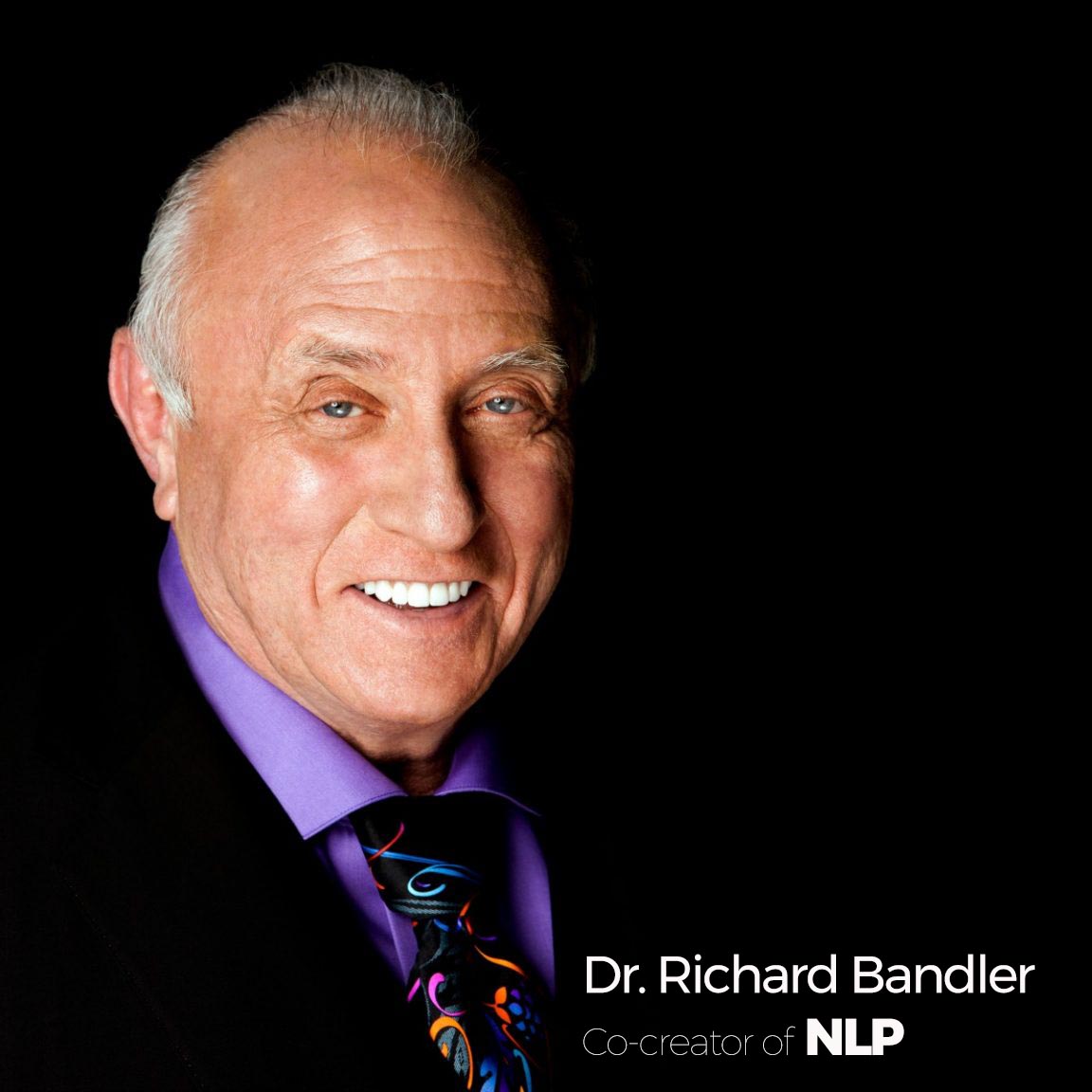
Neuro-linguistic programming (NLP) is a set of skills that reveal the kind of communication we have, with ourselves and others. In other words, our inner and outer dialogues. But more than anything else, NLP is a psychological approach that involves analyzing successful strategies and how they can be applied to a goal. It refers to how our brain works and how to change negative thoughts, language and patterns of behavior learned over time and are set into our subconscious through repetition and experience.
What the name means
NLP which is a combination of neuro, linguistic, and programming can be easily understood if we offer a definition to its parts:
- NEURO: Refers to the mind or brain, particularly the different states of body-mind and how they affect communication and behavior. NLP teaches us in a methodical way how to view these states and develop mental maps on how things happen and change.
- LINGUISTIC: All our body-mind states are revealed in our language and in our non-verbal communication (body posture and expressions). By using language as a tool, we gain access to the inner workings of our mind. NLP language patterns teach us how to access unconscious information that would remain vague and unknown otherwise.
- PROGRAMMING: This is simply a reference to the mind’s capacity to change its thought patterns and states. Most of our life, 95% in fact, is driven in autopilot. A trained NLP practitioner knows how such outdated programs are structured and how to access and change them through conversation.
The history of neuro-linguistic programming
 NLP was created in the 1970s by Richard Bandler, an information scientist and mathematician John Grinder, an American linguist, at the University of California in Santa Cruz, United States. NLP became known after their first book called «Structure of Magic: A Book about Language of Therapy», was released in 1975. In it, they highlighted certain communication patterns that they considered to be excellent.
NLP was created in the 1970s by Richard Bandler, an information scientist and mathematician John Grinder, an American linguist, at the University of California in Santa Cruz, United States. NLP became known after their first book called «Structure of Magic: A Book about Language of Therapy», was released in 1975. In it, they highlighted certain communication patterns that they considered to be excellent.
In this book, the NLP meta-models (learning through observation) were presented, a new technique that identified language patterns reflected in basic human cognitive processes. It was the beginning of positive/negative self-talk as we know it today. Since words and most importantly spoken words have the power to influence thought, it goes without saying that negative self-talk over time creates a self-taught self-defeating prophecy. Positive self-talk will have the exact same effect over time.
Much of the book was based on the work of Virginia Satir, mother of family therapy, Fritz Perls, and Milton Erickson with whom Bandler went on tour and studied for years. It also integrated techniques and theories from other renowned mental health professionals and researchers of the time such as Noam Chomsky, Gregory Bateson, Carlos Castaneda, and Alfred Korzybski.
After Bandler and Grinder began marketing the approach as a tool for people to learn how to achieve success, interest in NLP grew by the late 1970s. Today, NLP is widely used and in a great variety of fields, including education and counseling, medicine, law, business, the performing arts such as music, dance, and drama, sports and the military.
How NLP works in general
 Most of our learning is based on a layering effect that relies on constant reinforcement over time. That means we build our beliefs based on the quality (positive-negative) and quantity of our experiences. The greater the number of repetitions and the stronger the emotions associated with our experiences, the stronger and more deep-rooted the program.
Most of our learning is based on a layering effect that relies on constant reinforcement over time. That means we build our beliefs based on the quality (positive-negative) and quantity of our experiences. The greater the number of repetitions and the stronger the emotions associated with our experiences, the stronger and more deep-rooted the program.
That means that we rely on established patterns of behavior we set from the beginning of our existence, as a way to simplify our life and function with relative ease and fluidity. We don’t re-evaluate the meaning of things every time we face something, rather we rely on what that new experience «resembles» in the programming we have already established. This process is called automatic pilot or autopilot. Autopilot means that we live unconsciously and according to our programming, which consists of habitual thoughts, feelings, reactions, beliefs and traditions. This autopilot is hypnotic in its nature, which is why we do things without realizing that we do them. To change this thought mode, we must hypnotize to reprogram, which is how NLP works.
Modeling, action and effective communication are key elements in NLP. If we understand how someone accomplishes a task successfully, we can copy it so we may have similar outcomes. Because of this, NLP considers that all human action is positive, because it provides more experience on any subject. Therefore, if a plan fails or the unexpected happens, the experience is neither good nor bad—it simply presents more useful information.
Bandler and Grinder proposed that everyone has a personal map of reality. By analyzing our own and other people’s perspectives we create a systematic overview of any situation. By understanding a range of perspectives, the user gains information. The senses are vital for processing available information and influence the body-mind dynamic. NLP is an experiential approach. Therefore, if a person wants to understand a situation, they must recreate it while performing the same steps in order to learn from the experience.
The 6 NLP hierarchies or Levels of Change
 NLP believes there are natural hierarchies in how to learn, communicate and change. The six logical levels of change, starting with the highest and in an order of importance are:
NLP believes there are natural hierarchies in how to learn, communicate and change. The six logical levels of change, starting with the highest and in an order of importance are:
- PURPOSE & SPIRITUALITY: As the first step in the change process, this can be an involvement in something larger than oneself. Change becomes of higher importance than a self-serving purpose. It can be based on religion (God’s will for us), ethics (the right thing to do), or another system, an occupational ideal for instance. The highest level of change is when a person sees themselves as part of the community and wishes to bequeath this positive change for the good of all.
- IDENTITY: Identity is the ideal person you want to be and the person you perceive you must become in order to undertake the relevant responsibilities and the roles you play and want to play in life. «Who am I?» and «How can I have a positive influence?» are questions that are answered here.
- BELIEFS & VALUES: These are your very own belief systems and the issues that matter most to you, that you will overcome your own barriers in order to accomplish.
- CAPABILITIES & SKILLS: These are your skill sets and all the things you are capable of doing.
- BEHAVIORS: Behaviors are the specific actions you perform. No longer wanting a certain behavior and wanting to behave differently is part of this change process.
- ENVIRONMENT: Your environment is your context or setting, including any other people around you. Your parents, loved ones, people you admire, etc. This is the lowest level of change.
The purpose of each level is to organize in a logical way and direct the information it contains. As a result, making a change in a lower level may cause changes in a higher level since the change will bring new awareness and perspective. According to NLP theory, however, making a change on a higher level will also result in changes in the lower levels.
How NLP works in therapy
«The map is not the territory» is the best-known dictum of Alfred Korzybski and a core NLP concept because it highlights the differences between belief (thoughts and behavior) and reality. It refers to the fact that each person operates within their own perspective rather than from a place of objectivity. Everyone’s perception of the world is unique and limited because it relies on personal thoughts and experiences and is therefore distorted. An NLP therapist must therefore understand how a person perceives their «map» and what effects these perceptions have on that person’s map of the world.
Any «map of the world» is generated from data received through all the senses (auditory, visual, olfactory, gustatory, or kinesthetic). This information differs from person to person in terms of quality and importance since each person processes their experiences using their own preferred or primary representational system (PRS). In NLP this system refers to what someone uses most often to display their experiences and show them to the world.
NLP therapists work effectively with a person and attempt to match that individual’s PRS in order to understand and use their personal map. This is possible to access by using cues, such as eye movements in order to understand their thinking and behavioral patterns, emotional state and aspirations. By examining a person’s map, the therapist can help them find and strengthen the most beneficial skills and assist them in developing new strategies to replace unproductive ones. This process can help individuals in therapy reach healing goals and create positive results.
Because NLP uses the brain’s ability to learn fast, it produces fast, lasting results and improves the understanding of our cognitive and behavioral patterns. It also seeks to build effective communication between the conscious and unconscious processes and help increase creativity and problem-solving skills in people. Some people compare NLP to Cognitive Behavioral Therapy or CBT, but NLP can create positive changes in less time.
In which areas does NLP help?
Since its creation, NLP has been used successfully to treat a wide range of issues. These include but are not limited to:
- Addiction
- Anxiety, phobias, and panic
- Hyperactivity & Attention-deficit disorder
- Borderline personalities
- Communication issues
- Depression
- Obsessions and compulsions
- Post-traumatic stress
- Schizophrenia & many more.
Our approach
For many years I have cleared negative energy through dowsing for my clients with amazing results. However, it became clear quite early in my practice, that even though the negative energy was cleared and people were now free to change, they didn’t necessarily know how to do it. So, after a brief period of bliss, they returned to their old patterns. Some came back for more therapy, others did not.
As time went by, I started adding visualization and other techniques into my sessions in order to shift mindsets and help change behaviors. Eventually, I decided that formal training in pattern change was necessary and no better teacher than the co-founder himself. And that’s how I started my training with Richard Bundler and started incorporating NLP into my sessions. I find the combination of clearing the negative energy and thought pattern change to be extremely effective.
If you like to book your session please PRESS HERE.
Xenia Ioannidou
Founder & Master Teacher of Alternative Therapies
Real Change Academy®




